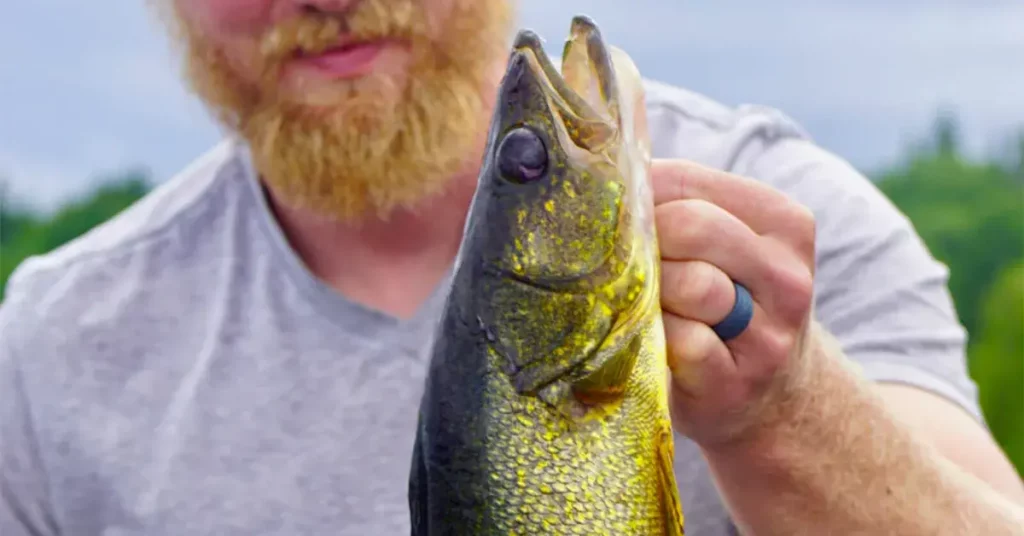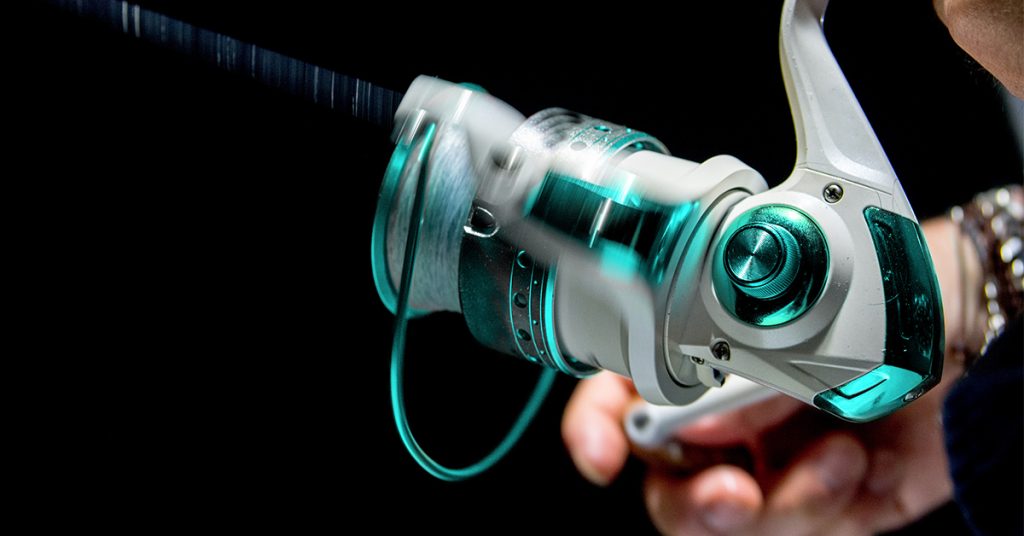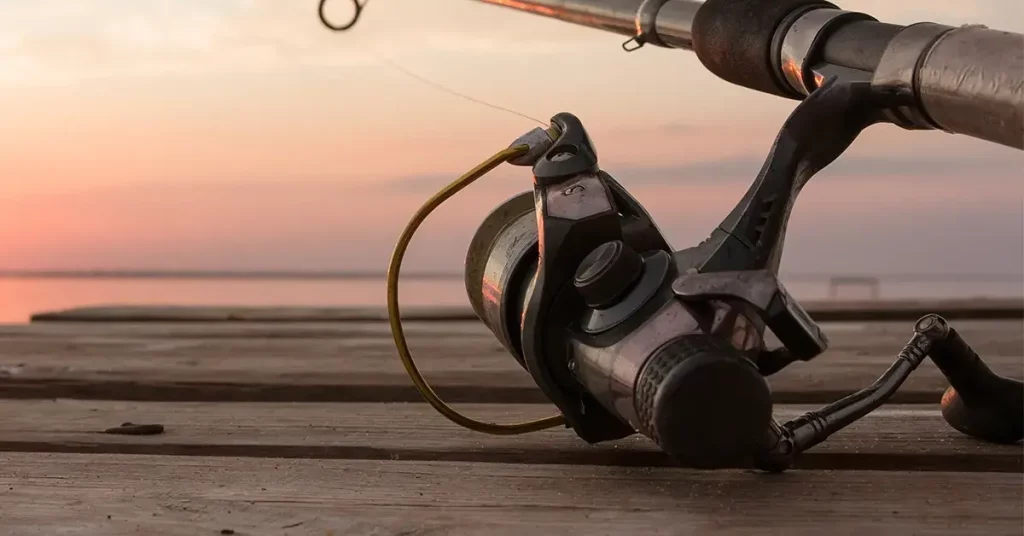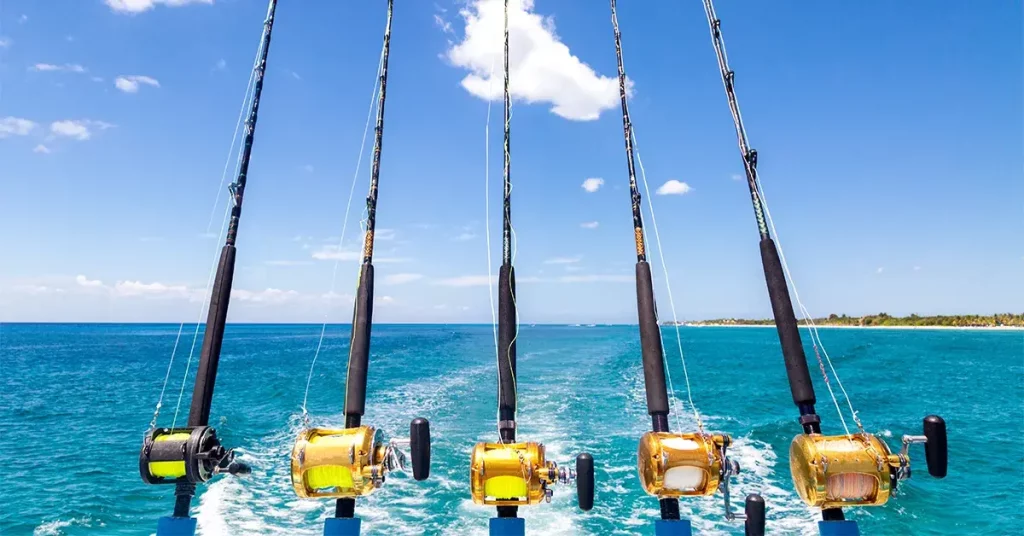Walleye are one of the most prized freshwater fish throughout North America. They’re sought after by both sport and recreational anglers for their trophy size and delicious fillets.
If you’ve never tasted walleye before you’re in for a real treat – many anglers rank walleye as their favorite freshwater fish to eat!
Although they’re often called pickerel, particularly in the Canadian portion of their range, they are actually a completely distinct species from true pickerels.
Walleye aren’t the easiest fish to catch, however, and require some knowledge of their feeding habits, habitats, and unique biology. This article will dive into everything you need to identify, locate, catch and cook walleye as well as useful fishing tips.
What Kind of Fish is Walleye?
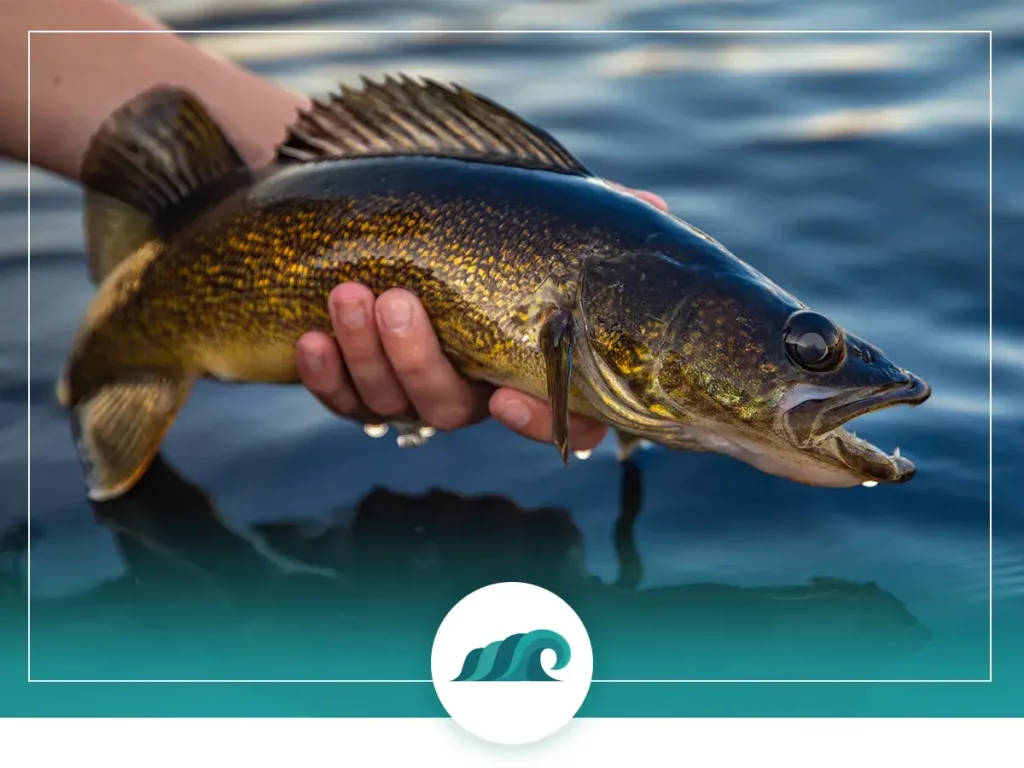
The walleye (Sander Vitreus) is a freshwater Perciform fish of the perch family found in the Northern United States and most of Canada. It goes by a number of different names depending on the region. Some anglers call it pickerel, while others refer to it as pikeperch.
Walleye is a close relative to the European Zander as well as the North American Sauger, which it shares many distinctive features with.
The name ‘walleye’ comes from their distinctive pearlescent eyes which protrude outwards. These eyes give walleye a unique advantage in low-light environments, which allow them to see and feed at night as well as in muddy, murky waters. Shrewd anglers can take advantage of the light reflected off the fish’s eyes at night, allowing them to be spotted in the dark.
Physical Characteristics
Walleyes are typically olive-green and gold colored (hence the French name doré – golden). The color fades from a darker olive on the upper part of the fish to gold on the flanks to white on the belly. They can be distinguished from their close relative the Sauger by a distinctive white blotch on the bottom of their caudal fin (tail fin).
The walleye’s mouth is large in proportion to its body and is filled with many sharp teeth. Yes, they can cut up your fingers if you’re not careful! A good pair of fish grippers can help you there.
Their dorsal and anal fins are distinctly spiny – which is another key identifying factor.
Walleyes can grow up to 31” long and weight up to 20 lbs. The largest walleye ever recorded was 42” long and weighed in at a whopping 29lbs.
Most walleye never get to reach their maximum size, as they’re highly prized by anglers. Typically, walleyes caught in North America are between 12” and 20”, well below their potential maximum. Keep in mind that walleye in northern regions tend to grow at a slower pace than their southern cousins.
They can live for over 20 years, but most walleye in the wild are caught before they reach 5 to 6 years old.
Where are Walleye Found (Habitat)?
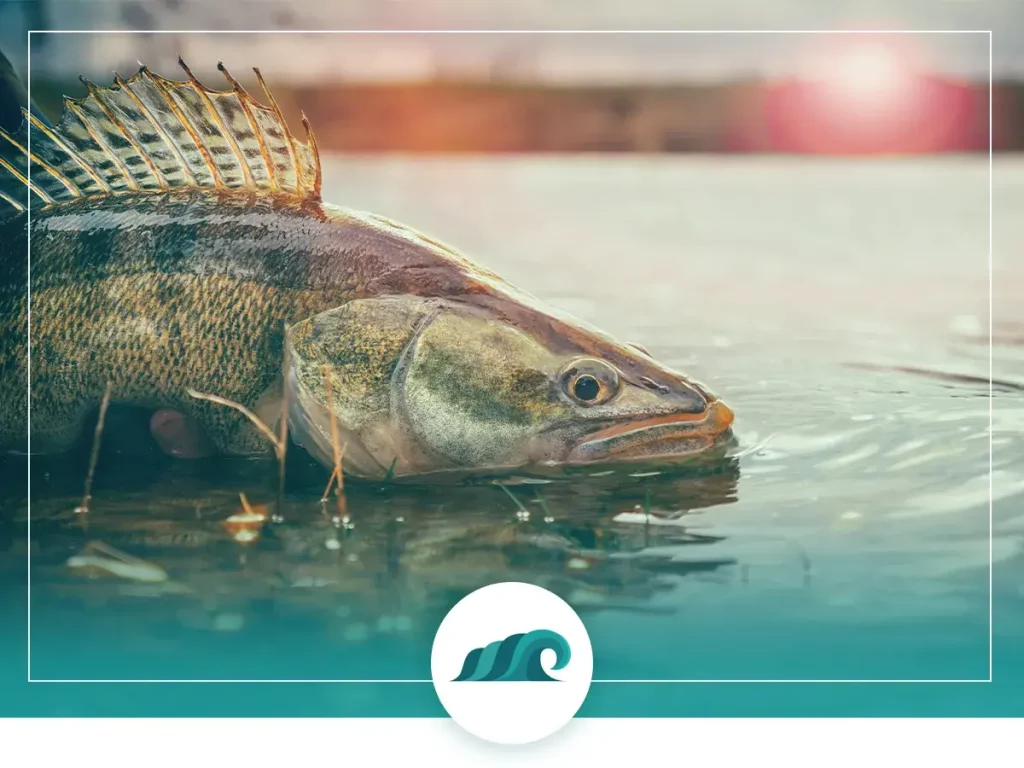
Walleyes natural habitat is clear water lakes and rivers across the Midwest and most of Canada. Stocking programs have increased their range to include the Mississippi River basin and many southern and western states.
They are particularly popular in the Midwest and are the official state fish of Minnesota, South Dakota, and Vermont, as well as the Canadian Provinces of Manitoba and Saskatchewan.
Walleyes can be rather particular about their surroundings. Their favorite spots will vary depending on the time of day, temperature and season.
During the day they generally prefer to hang out in cover such as rocks, reefs, weed beds and downed trees. Because of their excellent vision, they tend to feed at dawn and dusk, as well as in cloudy and murky waters.
They tend to hang out near the bottom during the day and move into the shallows to feed when light levels drop.
They’re usually more active during spring and fall and can be more challenging to catch during the hotter summer months. Walleyes prefer water temperatures between 65 and 75 degrees Fahrenheit but still remain active in colder winter temperatures – which make them a popular target for icefishermen.
What Do Walleye Eat?
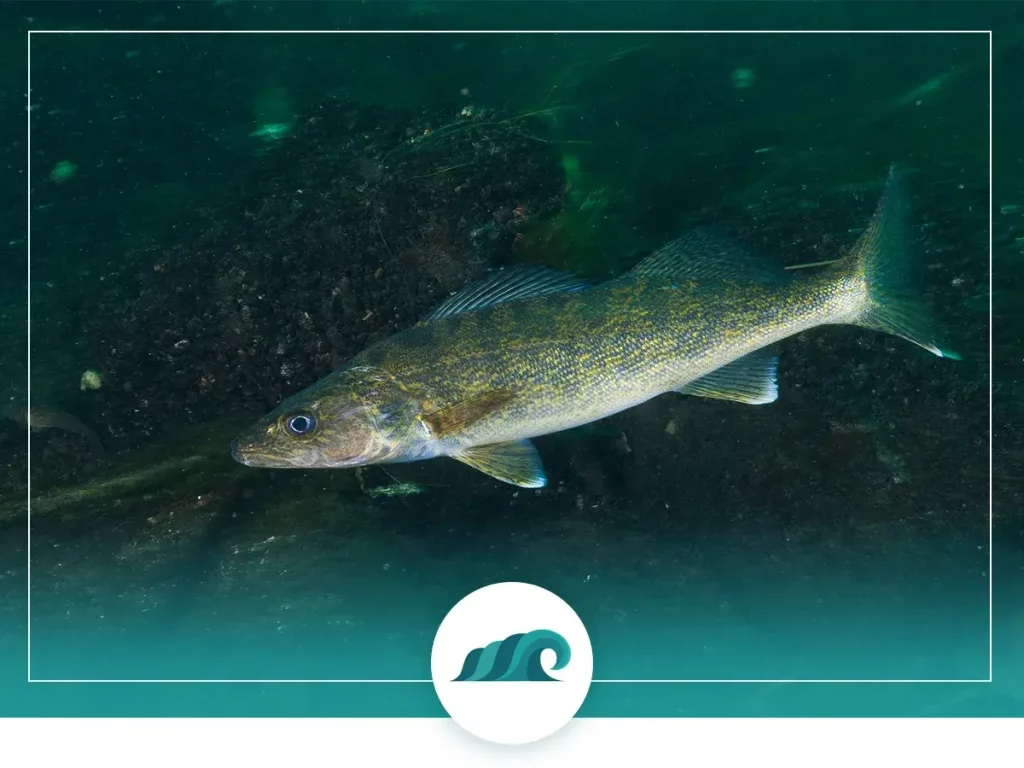
Young walleye feed mostly on insect larvae, worms, and tiny crustaceans. As they mature, walleye begin to feed on other fish like yellow perch, shiners, ciscoes, and shad. Mature walleye will still eat aquatic insects and larvae though – so you can use these as bait successfully.
Because of their excellent low-light vision and vibration sensitivity, walleye tend to be active hunters rather than ambush predators. This means trolling and jigging are excellent tactics for catching walleye.
How to Fish for Walleye
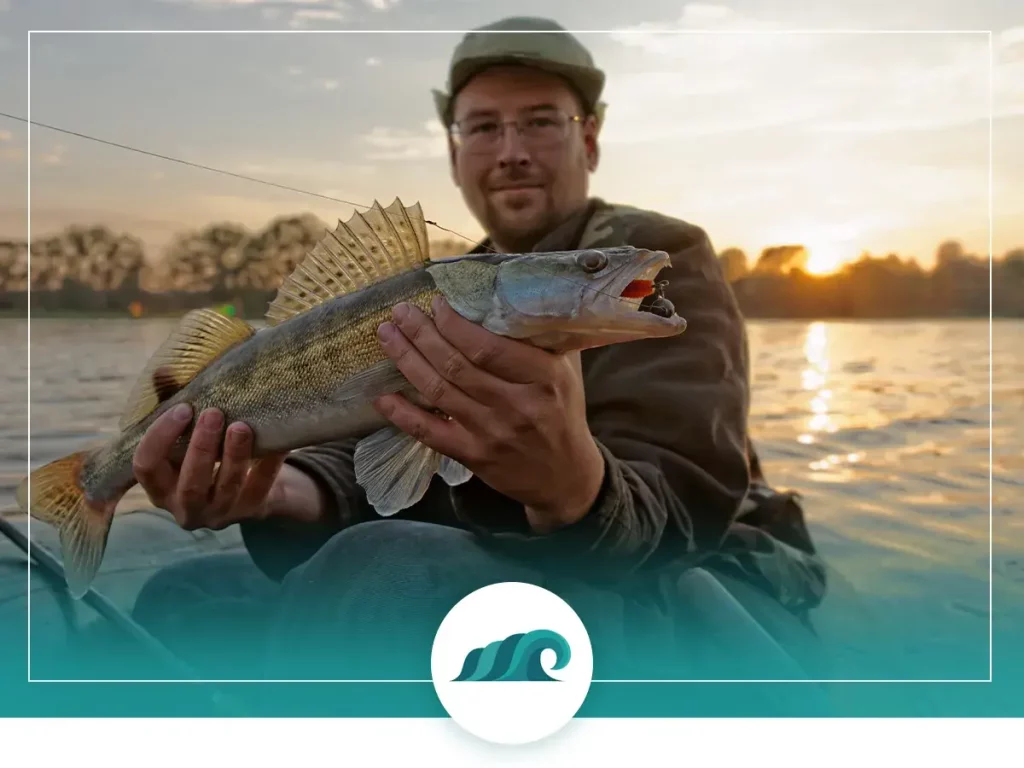
Catching walleye is a fun and challenging experience. They require some specialized knowledge about their feeding habits and preferred locations – so let’s get to it!
When is the Best Time to Fish For Walleye?
Generally, you’ll catch the most walleye during the early morning or late afternoon hours. These times also offer the shoreline angler an opportunity to catch a nice walleye.
As mentioned previously, walleye like to hang out in deeper water during the daytime and come to the shallows to feed during dusk and dawn. They’re also active at night, which can be an extremely productive time to catch them.
They tend to be more active on choppy, overcast days when light is unable to penetrate deep into the water – many anglers refer to this as ‘walleye chop’.
Walleye Fishing Techniques and Tips
Walleye can be caught with a variety of techniques including trolling, jigging and fly-fishing.
Trolling
Trolling is one of the best ways to locate walleye. It works especially well if your fishing over a large body of water and don’t know exactly where the walleye are located. During the summer months when the fish are less active, trolling may be the best way to locate and catch these fish.
Although they like to hang out near the bottom most of the time, some walleye will be suspended in the water column while they feed. These fish are often the most active and ones you’re going after while trolling.
The key to successful trolling is finding the depth where the walleyes are feeding. You may need to play around with different depths before you find the walleye. A good way to do this is by setting several lures at different depths simultaneously and see which one attracts bites first.
A good trolling motor can give you an advantage when trying to locate and catch these fish. Also, consider using a fish finder to assist you in finding the right depth for your lure.
Jigging
Jigging for walleye is probably the most popular way to catch these finicky predators. Because they like to hang out near the bottom, bouncing a weighted jig off the bottom of the lake or riverbed presents an enticing target for a hungry walleye. This works particularly well on soft bottoms, as is creates a sediment cloud which attracts the fish’s attention.
The key to successful jigging is to make contact with the bottom, keep your lure moving, and use a slower motion when ‘bouncing’ the bait or lure.
Either artificial bait or live bait can be used successfully for catching walleye. The most popular live baits are minnows, leeches, and nightcrawlers.
Pro Tip: If you’re fishing with live bait, bring a few different types with you. The fish might not bite on one type of bait – but they’re likely to go for something!
Fly-Fishing
While it’s not the most common way to fish for walleye, using a fly rod can present a unique challenge for the ambitious angler.
If you’re fishing in shallower water, a floating or intermediate line will ensure that your fly stays close to the bottom during most of the cast. If you’re in 10 – 15-foot deep water, then a sinking density compensated line works well.
A key point to remember is that walleye bites are lighter than many other fish, so you want to keep the line relatively tight to increase your strike detection ability. Another thing to consider is that walleye like to bite on slower moving lures/flies, so utilize a slower retrieval than normal to increase bites.
Seasonal Walleye Fishing Tips
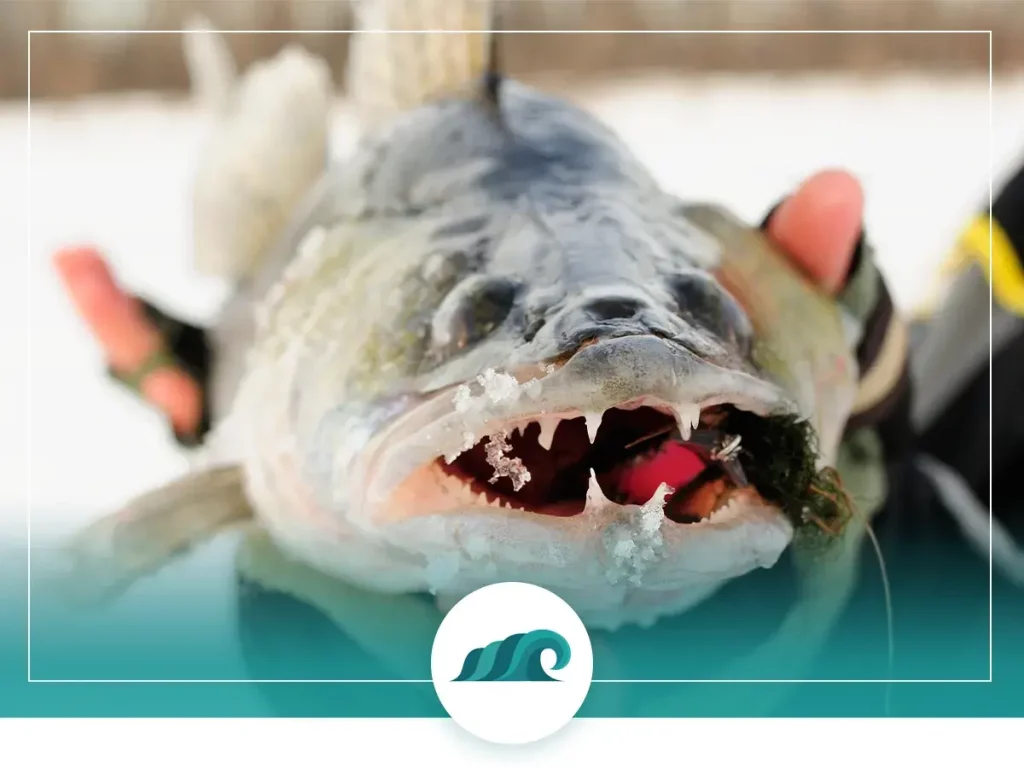
As mentioned previously, walleye behave very differently depending on the time of year. If you want to increase your chances then you’ll need to adjust your tactics to suit the season.
Spring Walleye Fishing
Walleye begin spawning in early spring when the water temperatures hit the mid to upper 40’s Fahrenheit.
About a month post spawning is one of the best times to target walleye, as they begin to feed heavily to recuperate from the spawning process. At this time, the baitfish that normally interest them have not yet grown large enough, so they’ll bite on almost any bait or lure.
Walleye are notoriously aggressive during late spring and early summer – it might be the best time of year to catch them! They tend to congregate in shallow water during this time of year.
Summer Walleye Fishing
As summer wears on and water temperatures increase, walleye start to retreat into deeper waters where the temperature is more to their liking. Baitfish are now large and abundant, so they no longer need to look very hard for a meal – which means more difficult fishing for anglers.
This time of year is referred to as the ‘summer slump’ by many walleye anglers. Walleye can still be caught during the summer, but you’ll need to fish deeper and cover more distance to locate them.
Fall Walleye Fishing
Fall is another boom time for walleye fishing. As the populations of bait fish begin to dwindle from predation, walleyes natural instincts kick in to put on weight for the winter ahead. This means you’ll have the opportunity to catch the biggest walleyes of the year during this time.
They tend to be fairly aggressive during fall and will bite on a variety of lures and bait. They also tend to school up, so when you locate them you’re likely to catch a bunch!
Winter Walleye Fishing (Ice Fishing)
Like all freshwater fish, walleye slow down significantly during the winter months when the temperatures drop and their lake or river freezes over. However, they’re still active enough to catch and make an excellent target for ice fishermen.
If you live in an area where the lakes freeze thick enough for ice fishing, then catching a winter walleye is a great way to get out of the house!
Generally, walleye follow three stages during wintertime. At first freeze they tend to be highly active in shallow water, then as the temperatures drop further they move into deep water and become more docile, and finally, as temperatures climb again they start moving into their shallower spawning areas.
Check out this well-made video if you want to see what ice fishing for walleye is like:
Walleye Fishing Rigs
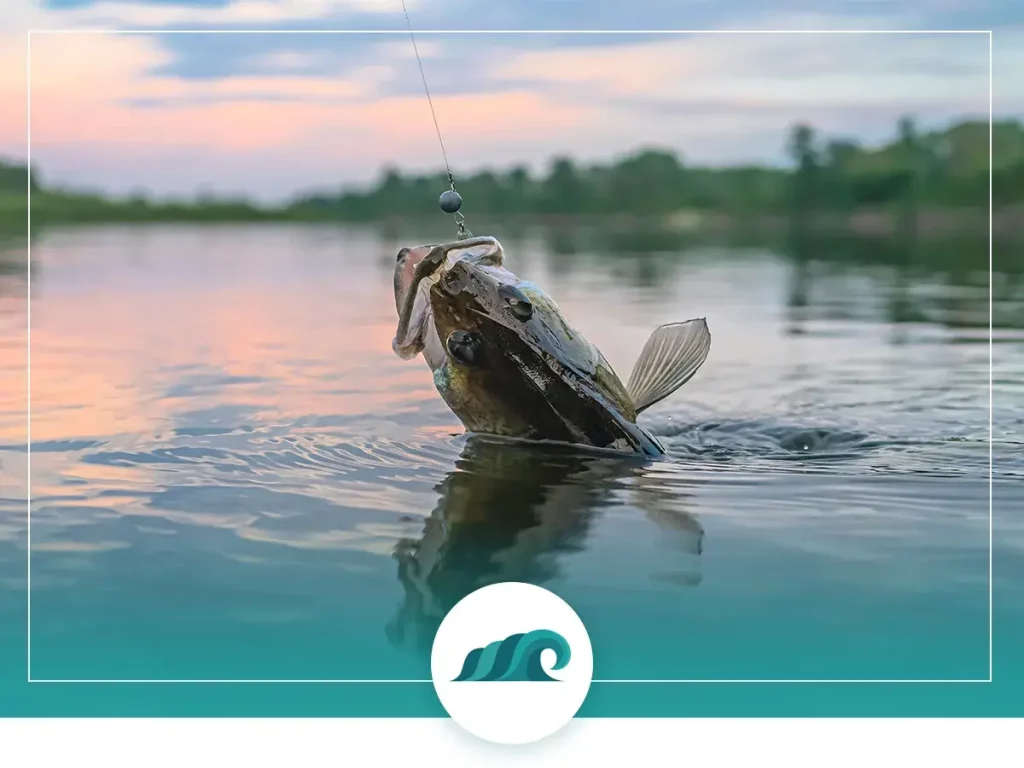
There is no best walleye rig for every situation – the ideal rig really depends on what type of fishing you plan on doing.
Lures and Bait
Some of the most popular options for catching walleye are slip-rigs, slip-bobbers, bottom-bouncers as well as soft plastic lures on a jig. Live bait like minnows, leeches, and worms also work very well, especially when the walleye aren’t biting on artificial lures.
Generally, live bait will outperform artificial lures in most situations – providing you rig it up correctly.
For springtime fishing, a popular rig is the ‘mayfly rig’. This rig imitates a mayfly emerging from a lake bottom, which is one of the walleye’s favorite foods. To construct this handy rig simply attach a small brass spinner and several beads to your line and then tie a small hook to the end.
Best Walleye Rod
If you’re looking to catch walleye by jigging or spinning, then a lightweight graphite rod between 6.5 and 7 feet is a solid choice. You’ll want a rod with a moderately fast to fast action – which will help you detect bites and set the hook.
Versatility is key when walleye fishing. You may need to test a variety of lures before the fish start biting. If you’re only taking one rod with you, go with something in between ultra-light and medium – as this will allow you to fish with the largest variety of bait and lures.
A good option for an all-around walleye rod is the St. Croix Eyecon Spinning Rod. This rod will also work well for other freshwater fish like bass, perch, and trout.
If you plan on trolling, then a heavier 7’ – 9’ long graphite or fiberglass will work well. A trolling rod needs to be heavier duty than other rods due to the constant tension from the water and the shock of a fish hitting the bait.
Best Walleye Reel
A good spinning reel is probably the most versatile setup for walleye fishing. It will enable you to throw spinners, live bait, jigs, and smaller crankbaits.
The ideal size reel for walleye and similar freshwater fish is around 2500. This will give you a good compromise between finesse and the amount of line available.
My personal favorite walleye reel is the Pflueger President. It offers excellent performance for a pretty reasonable price and is built to last.
Best Fishing Line for Walleye
Although braided line is generally preferred by many anglers, both monofilament and braided line can work well for walleye fishing.
Braided line is durable, offers little stretch and is much thinner than mono. This makes it better at setting the hook and is less visible in the water.
Mono line is less expensive, has more stretch and can be useful for shallow water and when the fish are more lethargic.
Keep in mind that walleye can be picky eaters, so a thick line can tip them off to your presence. That’s why using a fluorocarbon leader is a good idea, especially when fishing in clear water. This will also allow you to quickly cut the line should it get tangled or stuck.
An excellent choice is SpiderWire Braided Stealth 10-Pound line, however, any braided line made by one of the top manufacturers (Berkely, KastKing, Power Pro) will work well.
What Size Line for Walleye Fishing?
For the majority of walleyes that you’re likely to encounter, 8 – 10 lb test line will work well. If you’re in an area with some real monsters, then go with 20 lb test line.
Cooking Walleye
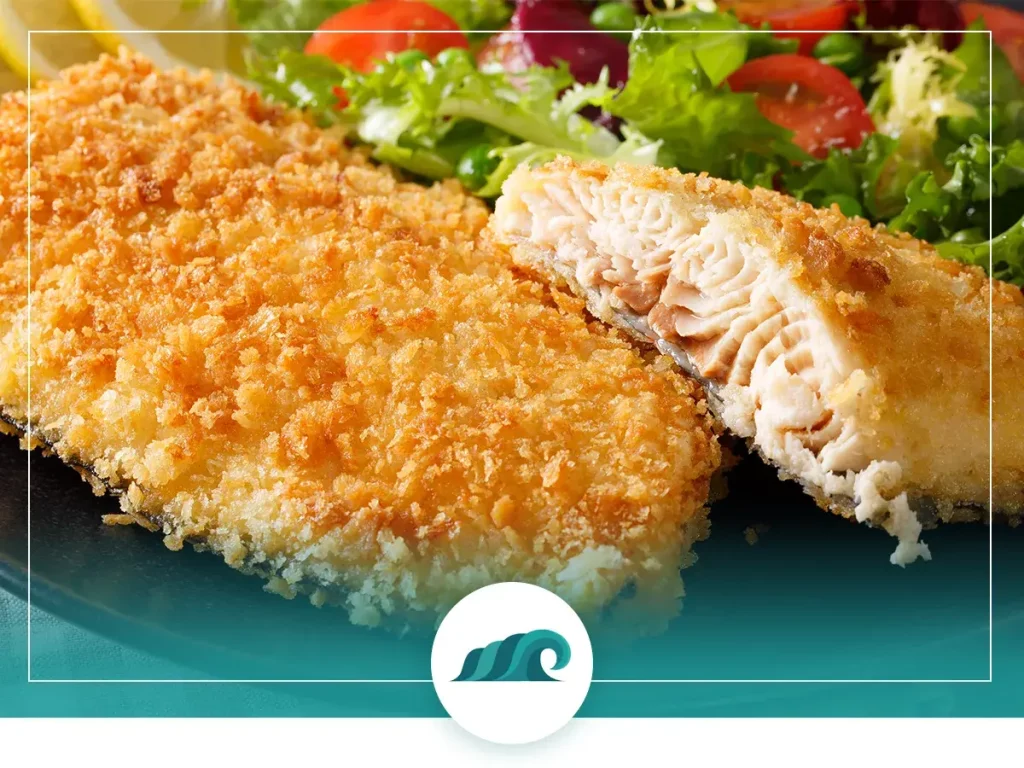
Walleye fishing is a lot of fun, but walleye eating is better! Besides being a challenge to catch, one of the reasons walleye is so prized is it’s flavorful and tender fillets.
How to Fillet a Walleye
Before you throw that freshly caught walleye in the oven or frying pan you need to clean and remove the fillets.
Filleting walleye is similar to filleting most other fish. Make sure you have a sharp and flexible filleting knife handy. Don’t forget to cut out the cheeks as well – they’re delicious!
Check out this video to see a detailed explanation.
Walleye Recipes
Walleye fillets have a light and flaky texture when cooked. They’re mild tasting with a slightly sweet flavor, similar to other whitefish. Some folks say they taste like Cod.
In my opinion, the best ways to cook walleye are either sautéed in butter or breaded and cooked in the oven/fried.
Breaded Walleye Recipe
Ingredients:
- 2 large eggs
- 1 cup of Italian breadcrumbs
- 2 tablespoons of Freshly grated Parmesan or Romano cheese
- Salt and Pepper
- Chopped parsley
- 2 tablespoons butter
- 4 medium-sized walleye fillets
Directions:
- Beat the eggs and place inside a shallow bowl.
- Combine the breadcrumbs, salt, pepper, and parsley in another shallow bowl.
- Dip the fillets into the egg mixture and then into the breadcrumb mixture.
- Place the coated fillets in an oven dish and cover with 2 tablespoons of melted butter.
- Cook at 400 degrees for 15 – 20 minutes or until the flesh is white and flaky.
Sautéed Walleye Recipe
This might be my all-time favorite way to cook walleye – it’s simple, delicious, and doesn’t mask the delicate taste of the fish.
Ingredients:
- 4 medium-sized walleye fillets – you can keep the skin on or remove it – both are good.
- 2 tablespoons butter
- Salt and pepper
- Chopped herbs (Dill, chives, and parsley all work well)
- Juice from half a lemon
Directions:
- Season the fillets with salt and pepper.
- Heat the butter in a frying pan over medium-low heat until it begins to bubble, but before it changes color.
- Gently place the fillets inside the pan and spoon the butter over top of the fillets.
- After 2 minutes flip the fillets and continue spooning the butter on the fillets.
- Cover the pan for another 2 minutes or unit the fish is flaky and cooked through.
- Remove from the pan and sprinkle with chopped herbs and lemon juice.

